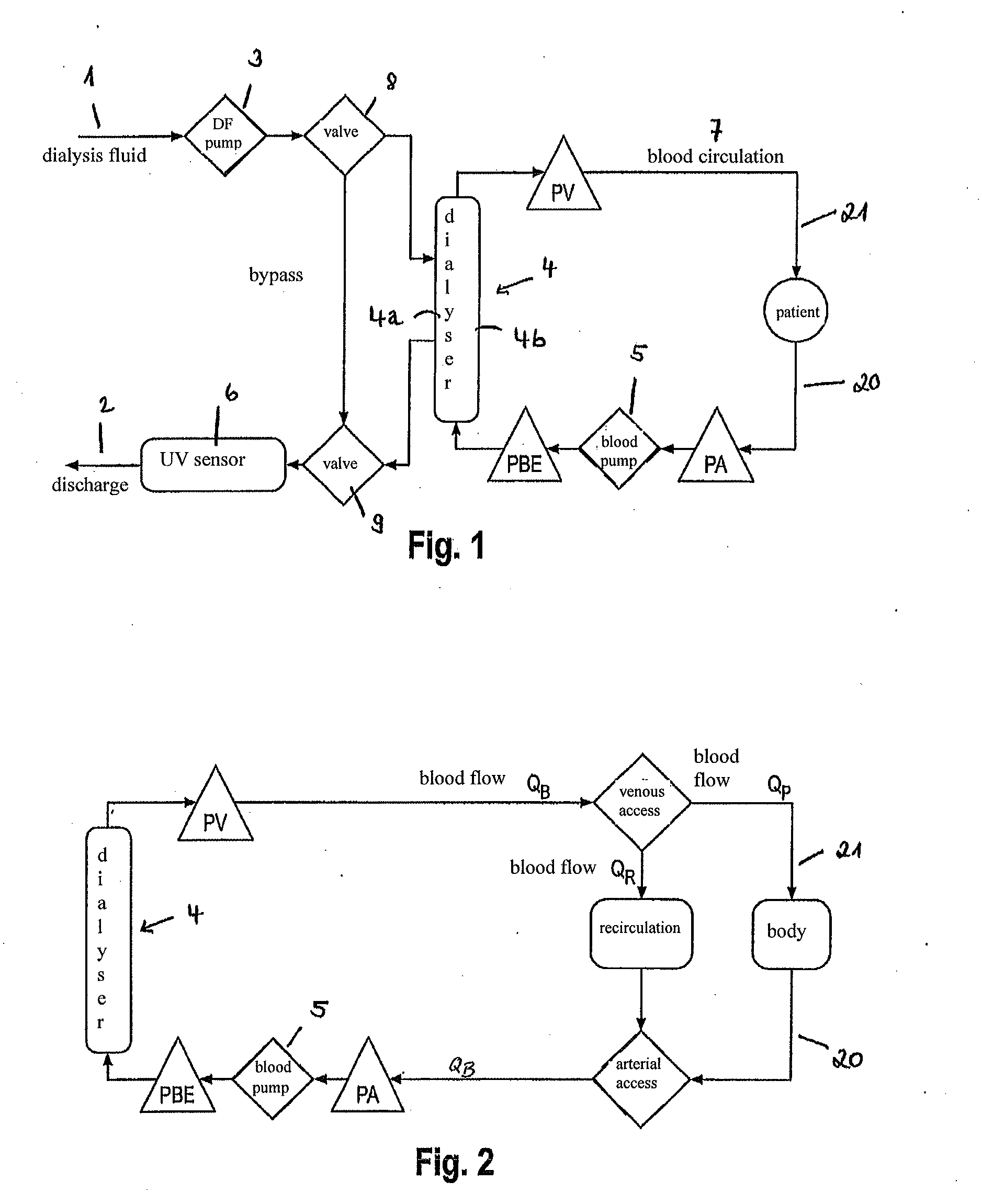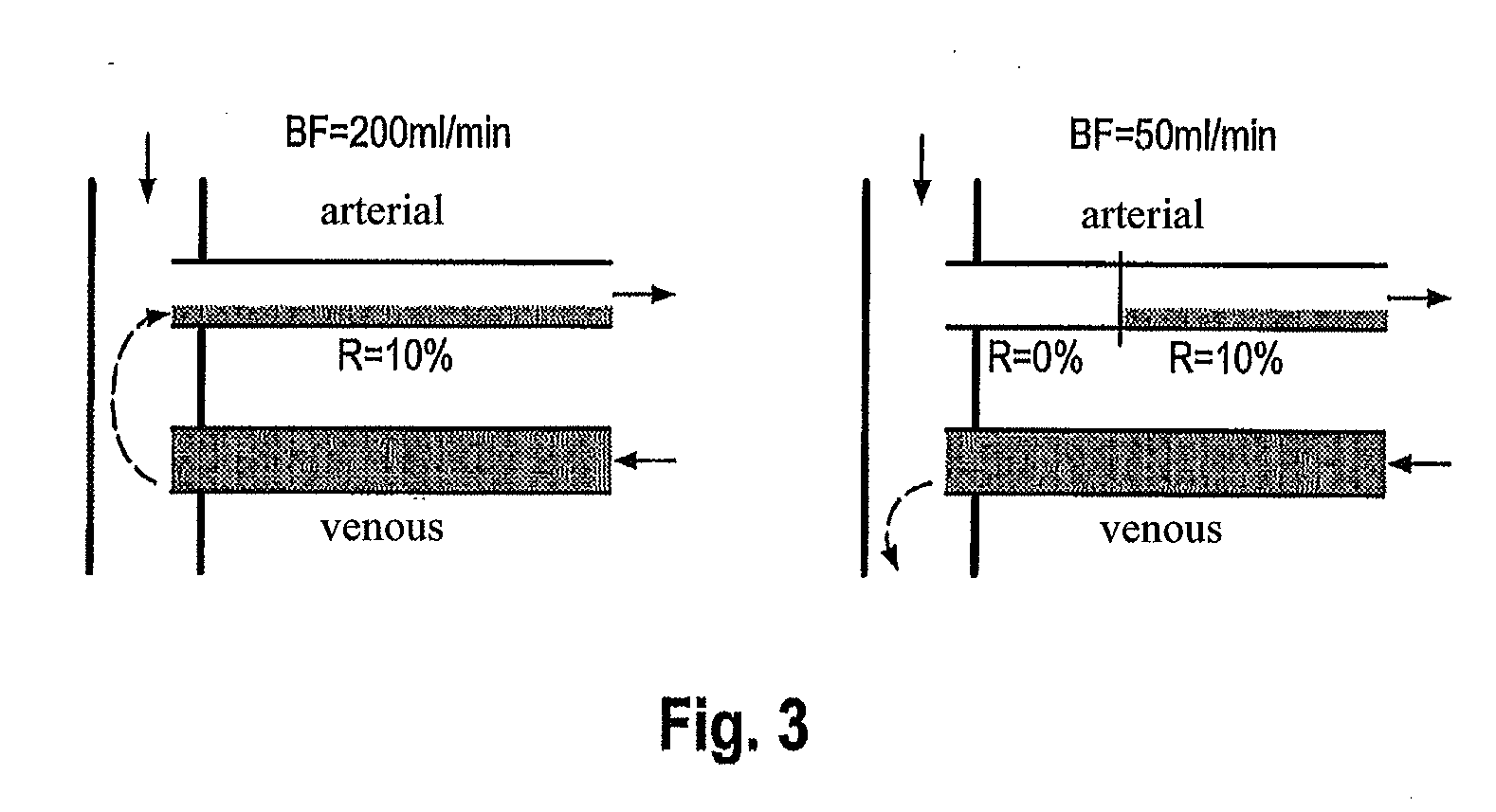Method of detecting recirculation in an arteriovenous shunt during ongoing hemodialysis and dialysis system
a technology of arteriovenous shunt and shunt, which is applied in the direction of suction device, other medical device, medical device, etc., can solve the problems of deteriorating dialysis efficiency and general condition of patient, according to the state of the ar
- Summary
- Abstract
- Description
- Claims
- Application Information
AI Technical Summary
Benefits of technology
Problems solved by technology
Method used
Image
Examples
Embodiment Construction
[0088]It is the target of this invention to enable measurement without a bolus administration. In parallel to this, no additional technical equipment shall be necessary and thus the invention shall be based on a sensor system which is already provided (anyway) in a generic dialysis apparatus.
[0089]In the flow diagram of FIG. 1 a dialysis system according to aspects of the invention having a side facing away from the patient (dialysis fluid side) and a side facing the patient (blood side) is shown in schematic representation.
[0090]By 1 a dialysis fluid inlet is denoted and by 2 a dialysis fluid discharge is denoted. Via a flow pump 3 dialysis fluid is pumped into a dialysis fluid chamber 4a of a dialyser 4 so that the dialysis fluid flows through the chamber 4a in a predetermined direction. The dialyser 4 includes a semipermeable membrane not shown in FIG. 1 which forms the boundary between the distal side and the proximal side of the dialyser 4. Furthermore the dialyser 4 has a bloo...
PUM
 Login to View More
Login to View More Abstract
Description
Claims
Application Information
 Login to View More
Login to View More - R&D
- Intellectual Property
- Life Sciences
- Materials
- Tech Scout
- Unparalleled Data Quality
- Higher Quality Content
- 60% Fewer Hallucinations
Browse by: Latest US Patents, China's latest patents, Technical Efficacy Thesaurus, Application Domain, Technology Topic, Popular Technical Reports.
© 2025 PatSnap. All rights reserved.Legal|Privacy policy|Modern Slavery Act Transparency Statement|Sitemap|About US| Contact US: help@patsnap.com



